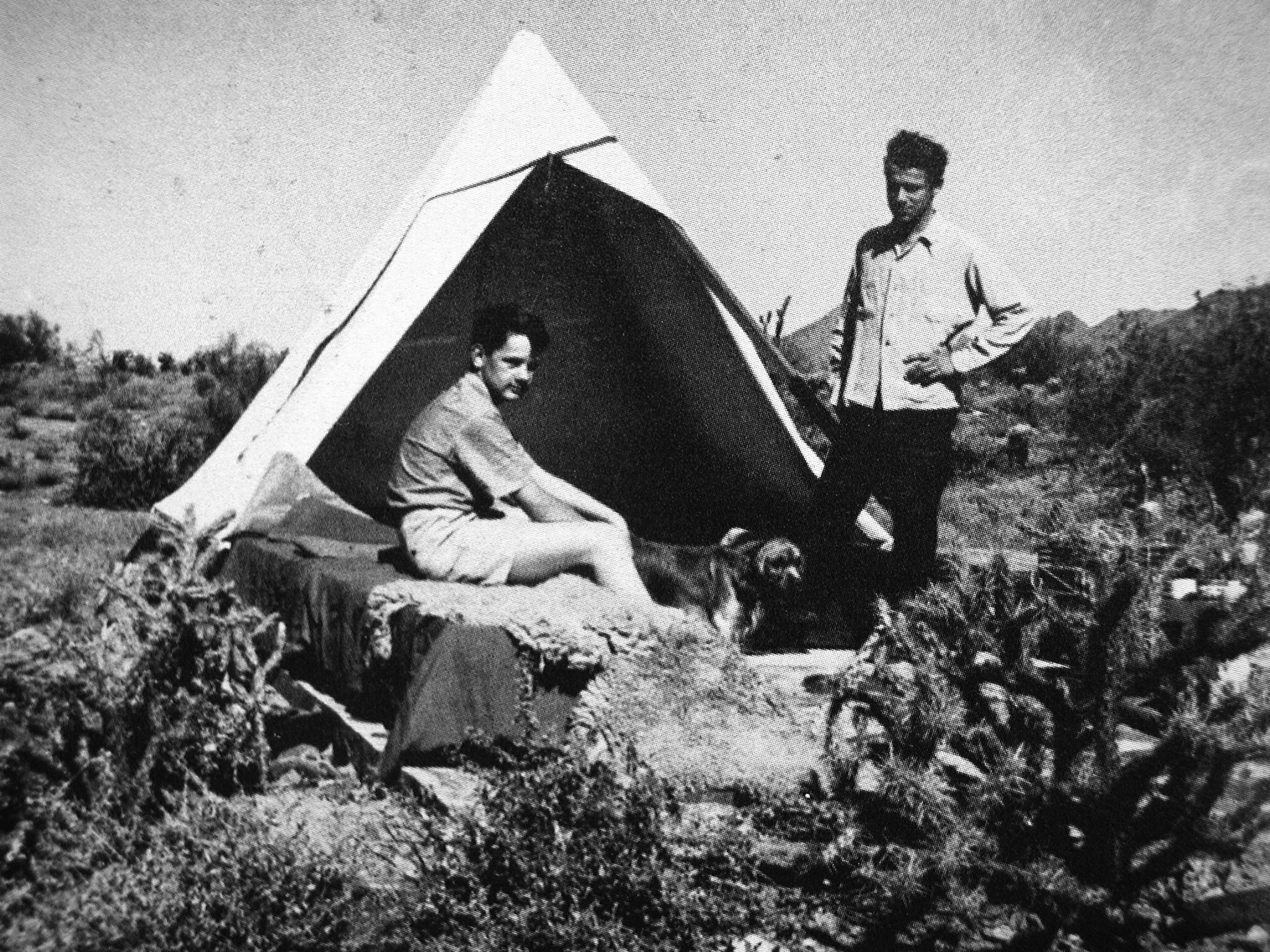A stone and stucco building rises up from the desert landscape, reminiscent of a Mesoamerican pyramid. Frosted glass panels stretch across the sloping roofs, lined and detailed with rust-red metal. An isosceles triangular pool filled with sparkling turquoise water tempts visitors to take a refreshing dip and escape the Arizona heat.
This is Taliesin West, Frank Lloyd Wright’s winter home, tucked away in the mountains of Scottsdale. Frank Lloyd Wright was an American architect and designer. He designed more than 1,000 structures over a 70-year timeline. His belief was to create organic architecture — designs that were in harmony with humanity and the environment.
Wright’s collection of essays “In the Cause of Architecture” detailed six core propositions of organicity. In it, he wrote, “The notion of organic not as a thing, but as the character of a thing, living and active as an intrinsic quality that emerges in varied forms responsive to the surrounding environment.” This concept became Wright’s driving principle. Just like any living thing that grows from within and adapts to its environment, Wright’s philosophy demonstrates his affinity for organic architecture that works in tandem with its surrounding environment.
Wright’s primary family home located in Wisconsin is known as the original Taliesin. When Wright began to suffer from pneumonia in his 70s, his doctor suggested that he find a more temperate place to live during the winter months. Arizona became his new home and Taliesin West was born.
After visiting Arizona in the past, he returned in 1937 to stake out a potential spot in Scottsdale in the shadow of the surrounding mountains. He fell in love with the location, and construction on Taliesin West officially began in January of 1938.
“It changed constantly,” says Jeff Goodman, Vice President of Communication and Partnerships at Taliesin West. “[Wright] viewed it as his desert laboratory where he could experiment with different materials… before putting them into his architectural projects. He’d come back every fall and change some aspect of Taliesin West. It even continued through his death — that’s how Wright wanted it to be.”
Taliesin West was the original location of Wright’s School of Architecture, which moved locations to Arcosanti in June of 2020. Wright’s philosophy on how he believed architects should be educated revolved around the idea of learning by doing. In line with this, the architecture students were required to construct their own living quarters as part of their curriculum.

“The shelters evolved from simple white tents in the desert where students used to stay,” says Goodman. “They’d build during the day and sleep there at night, and then they decided to make their own modifications to them. That program grew to become an opportunity to make your own mistakes in your own structure and learn from them.”
Each dwelling was uniquely constructed, designed, and decorated by each student. Today, the original structures built by Wright and his students have been preserved and left alone, but Taliesin still revolves around innovation and experimentation in the name of knowledge.
“The whole experience of being at…Taliesin West was about learning to be more than an architect, it was about learning to be a productive citizen of the world,” says Goodman. “[The architecture students] designed, built, prepared meals, served, performed in theaters, all as part of Wright’s educational philosophy.”
Today, Taliesin West looks different than it did in its heyday, but true to Wright’s vision, it continues to be a powerhouse of architectural education.
“Visitors get to experience one of Wright’s most personal creations [here],” Goodman says. “He didn’t [build] it for a client, he made it for himself, his family, and apprentices.”
Goodman looks forward to resuming tours of the historic and more current shelters, which paused because of COVID-19 concerns. “We’ll be seeing a new version of the shelter program and other new things too,” he says.
Currently, Taliesin West offers a K-12 STEAM program and seasonal camps, allowing kids of all ages to learn through both virtual and in-person options.
For more information on Taliesin West, visit franklloydwright.org.
Keep up with all of Green Living’s original content online and on social media
.





